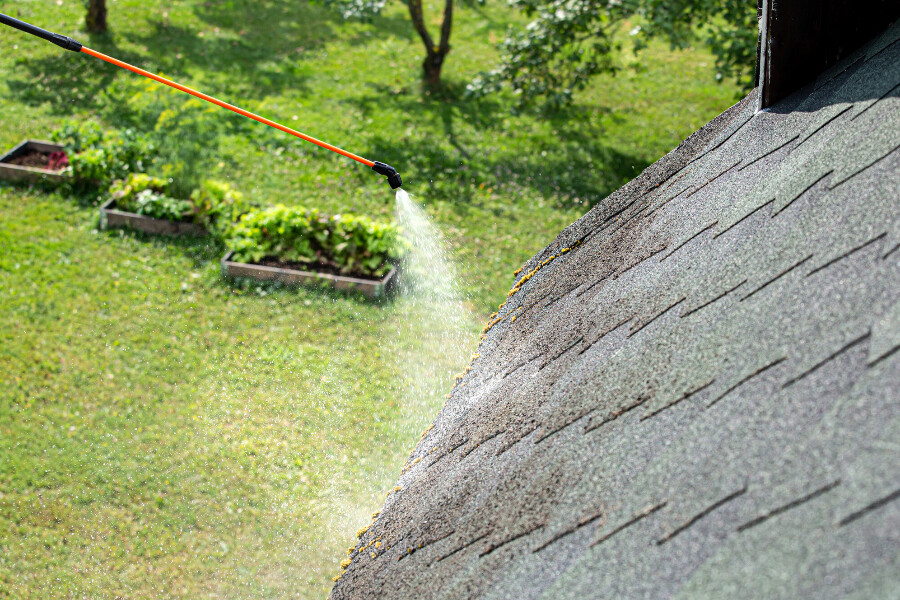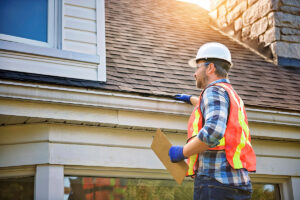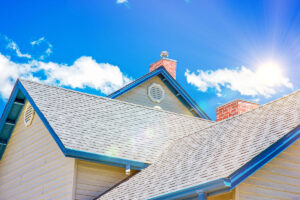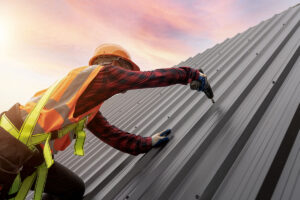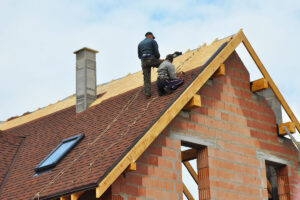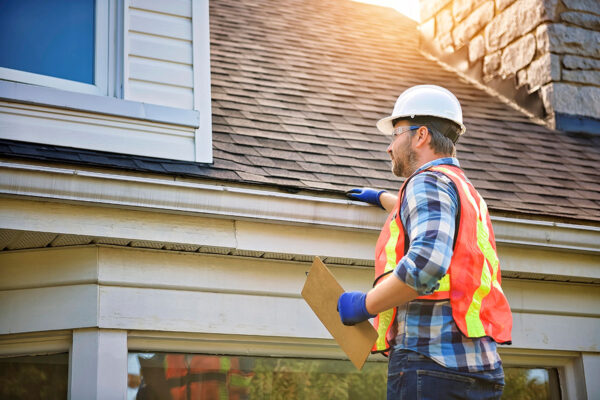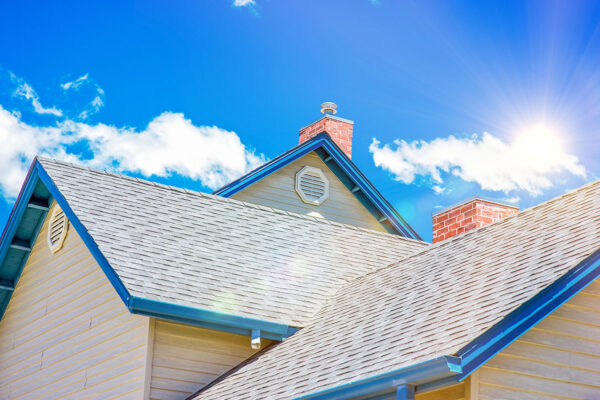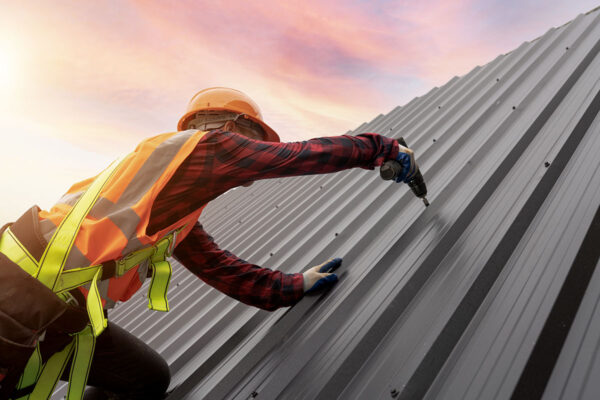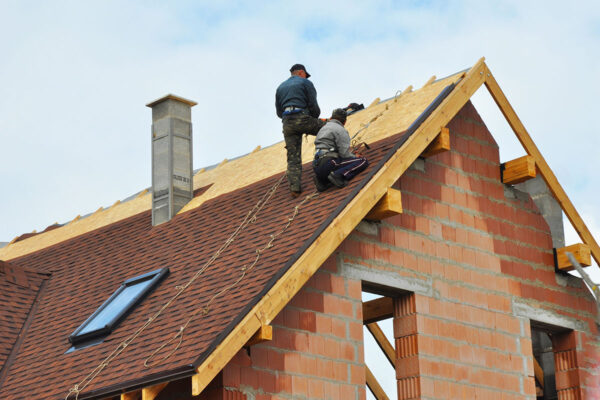Have you noticed dark streaks along the roof of your home? Has their unsightly appearance caused you some frustration or concern? You may be wondering what the cause of these stains are, or if you should be worried about possible health risks or serious property damage. You may be surprised to know that their presence isn’t uncommon. In fact, you may have seen these streaks on many properties of all kinds and not even realized it. This may be because of the growing popularity of asphalt shingles. Black streaks show up on your roof for a reason and can be both fixed, and largely prevented.
Causes of Black Streaks
While there are several possible culprits behind the black streaks on your roof, the most common cause by far is gloeocapsa magma. This hardy, blue-green algae is commonly found on asphalt shingles because it feeds on the limestone that is commonly found in these types of shingles. This algae thrives in moist areas, so they’re especially prevalent in areas known to have very humid climates. Shaded, moist areas on your roof highly encourage algae growth. They trap in moisture and feed on your shingles.
How Does Algae Get on Your Roof?
This algae is airborne, and wind is one of the most common transporters. The wind carries their spores to your roof. As the algae accumulates overtime, they develop a hard, protective coating that takes on a rather dark color. These are those unsightly dark streaks or stains that you have noticed on your roof. As time passes, their appearance can worsen and become even more unsightly.
Is the Algae Harmful?
Though the presence of this algae isn’t harmful to your health, it can lead to granule loss and cause your roof shingles to age prematurely. The speed at which it can grow and spread can also quickly negatively effect the overall appearance of your home.
Preventing Black Streaks
While there is nothing that can be done to completely prevent this algae from growing, there are a few prevention techniques that you can use to decrease the encouragement for growth in most areas of your roof.
Because this algae thrives in moist and shaded areas, creating the opposite of this environment can help prevent their growth and accumulation. Things like ensuring proper water drainage by clearing gutters, clearing trees to allow in more sunlight, and frequently maintaining roof cleanliness, can all greatly reduce the risk of these streaks.
Algae’s Enemy
Copper is commonly known to kill algae. By incorporating copper into your roof, you can greatly eliminate the risk for algae growth. If you’re looking to buy new shingles, it would be a good idea to look into algae-resistant shingles, which are often copper-infused.
You could also install copper or zinc strips along the top of your roof. Both of these elements help prevent the growth of algae. Neither of these techniques eliminate existing algae, rather they work to prevent or slow continuing growth.
Galvanized roof flashing also works to help protect your shingles from algae growth with the help of metal particles. They can be installed at the top of your roof and under your shingles, and are secured with a hammer and nails.
Fixing Black Streaks
While these black streaks can seem permanent with their unsightly appearance, fortunately there are a few ways to remove the algae and restore your roof’s appearance.
Do It Yourself
Although this option may seem enticing, it can be risky. You must ensure that you use the correct technique, protect yourself, and be gentle so that you don’t cause any further damage to your roof shingles. The most common chemicals used to clean off algae are TSP and chlorine bleach. Most would recommend that you use a mixture of trisodium phosphate, water, and bleach. Because this mixture can be damaging if it comes into contact with plants or outdoor furniture, it is recommended that you protective and remove all things in surrounding areas.
If you’re unsure about the cleaning formula, some research on your particular roof shingles can provide you with specific recommended cleaning solutions, and techniques. When attempting this method, make sure that you’re wearing protective gear and non-slip shoes to prevent any accidents.
After you have created your cleaner, place it in a spray bottle and spray down your shingles. Leave the solution on for 15 to 20 minutes, and then slowly rinse it with your outdoor garden water hose. It is very important that you never use a power washer to clean off the algae as this could cause further shingle damage.
Due to the risks of injury and further damaging your roof, it’s highly recommended to go with the second option.
Leave it to the Professionals
As mentioned above, taking a DIY approach to algae removal can be risky and lead to further expenses. Instead, a better idea is to hire a professional roof cleaning company to clean off the black streaks for you. This route is beneficial because you can rest easy know the job will be completed by individuals with years of experience.
Not only can you ensure that the black streaks or stains are removed safely and efficiently, your shingles won’t be subjected to more damage, and the risk for any possible accidents lowers tremendously. Roofing experts have sprayers that gently mist the necessary cleaning solution on your roof, allowing the work to be completed more quickly and thoroughly than if you were to try and tackle the problem with spray bottles. Plus, if you hire a local roofing company to take care of the streaks they can take a look and ensure your roof is still in good shape, and let you know about any potential issues you may want to take care of before they become bigger problems.
Conclusion
Though black streaks on your roof may be concerning, they’re a fairly common issue. The streaks are caused by an algae that feeds on the limestone in common asphalt shingles, and there are multiple ways to fix the issue if your roof has already been affected.
There are also many techniques that can be used to prevent this algae from accumulating and forming those hard, dark coatings on your roof.
After removal, roof maintenance can help prevent the same issue from recurring—although it’s Important to note that nothing can fully prevent the algae from coming back.
If you decide to take on this removal project by yourself, then you must be very careful and very gentle in your approach, cleaning technique, and solution choices. Otherwise, the better choice is to hire professional roofers to remove those unsightly black streaks or stains from your roof to eliminate your concerns over them and help prevent them from coming back.

